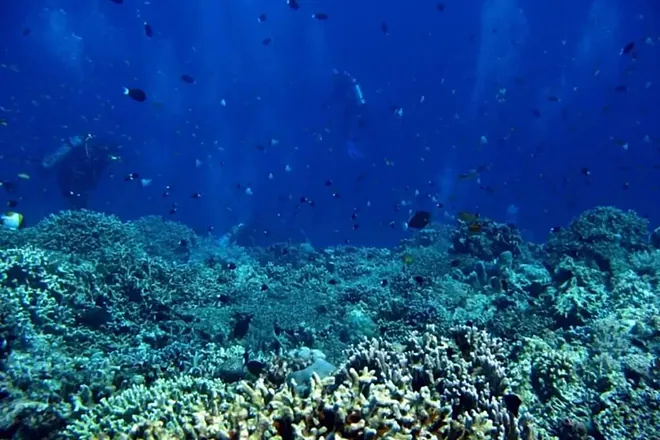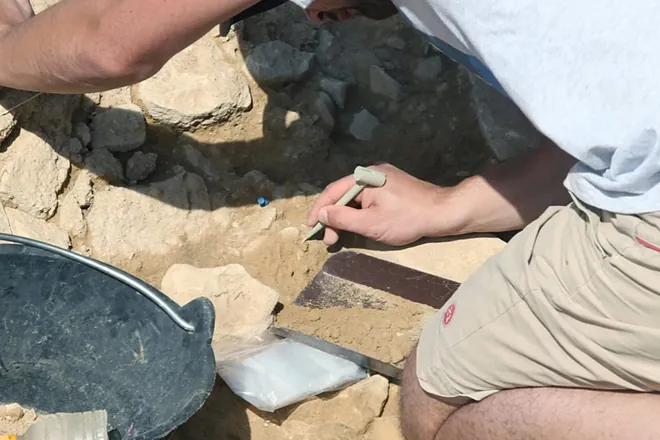The story of the dinosaurs’ end has long been told in cosmic terms: a six-mile-wide asteroid slammed into what is now Mexico 66 million years ago, triggering a planetary winter and sealing the fate of Earth’s most iconic animals. That global catastrophe is undeniable. But paleontologists caution against seeing the extinction as a single, neat event. The deeper scientists dig, the more they find evidence that dinosaurs faced repeated local disasters—flash floods, volcanic winters, ecosystem crashes—long before the final blow.

A new discovery in northwestern Alberta, Canada, is shining fresh light on this idea. Known as the “River of Death,” the Pipestone Creek site contains one of the densest dinosaur bonebeds ever uncovered, preserving the remains of thousands of individuals swept away in a single catastrophic event about 72 million years ago.
For paleontologists, it’s more than a tragic accident frozen in stone. It’s a window into dinosaur behavior, herd dynamics, and survival pressures during the last chapters of their reign.
A Graveyard Beneath the Hills
At first glance, Pipestone Creek looks like any other forested valley of Alberta’s Peace River region. But beneath its slopes lies a fossil deposit stretching more than a kilometer, with bone density approaching 300 per square meter.
Emily Bamforth, the lead researcher on the excavation, describes it as “a time capsule of a single moment.” Unlike many fossil assemblages that mix species and ages over thousands of years, Pipestone Creek captures the fate of a single herd of Pachyrhinosaurus, a horned herbivore related to Triceratops.
The animals were formidable. Adults reached five meters long and weighed about two tons, their skulls adorned with thick bony bosses instead of long horns. Within the bonebed, paleontologists have found individuals of all ages—tiny juveniles, strapping adults, and everything in between. This mix strongly suggests herd living, with younger dinosaurs protected within the group, much like elephants or bison today.
Among the finds is “Big Sam,” a spectacular 1.5-meter skull showing subtle differences from other known Pachyrhinosaurus specimens. Such variation is critical for understanding how these dinosaurs evolved and adapted across different regions of ancient North America.
A Catastrophe Frozen in Rock
What event could kill and bury such a vast herd at once?
The evidence points to a catastrophic flash flood. Sediment layers at Pipestone Creek show sudden deposition: coarse sands and gravels dumped quickly, not built up gradually. The chaotic jumble of bones—with skeletons disarticulated and mixed—suggests bodies were swept together violently rather than settling over time.
Bamforth explains: “All the evidence points to a storm-driven flood racing down from the nearby mountains. The herd was caught in the open, and there was simply no escape.”
This interpretation aligns with modern analogs. In 1983, a flash flood in Kenya’s Amboseli National Park drowned more than 20 elephants in minutes. In 2010, heavy rains killed a herd of antelope in Kazakhstan. Sudden floods are a recurring threat for herd-living animals: when thousands move together, they cannot all react quickly to rising water.
Taphonomy: Reading Death in the Bones
Turning a chaotic fossil jumble into a narrative requires taphonomy—the science of how organisms decay, transport, and fossilize.
At Pipestone Creek, several lines of taphonomic evidence support the flood hypothesis:
- Bone orientation: Fossils are aligned in similar directions, a signature of water flow.
- Age profile: The presence of juveniles, subadults, and adults together indicates a catastrophic single-event mortality rather than slow attrition.
- Bone condition: Many are well-preserved with minimal weathering, showing they were buried quickly before scavengers or erosion could scatter them.
- Sediment matrix: The grain size and layering match high-energy flood deposits rather than quiet river sediment.
By combining these clues, paleontologists reconstruct not just that a flood occurred, but how it moved, how fast, and what it did to the herd.
Herds in Prehistory and Today
One of the most valuable aspects of Pipestone Creek is its confirmation of herd behavior in large ceratopsians. Dinosaurs are often imagined as solitary giants, but bonebeds like this show they lived in structured groups, with young and old traveling together.
Modern parallels abound:
- Bison on the Great Plains once migrated in herds of millions, vulnerable to river crossings and storms.
- Wildebeest in East Africa face catastrophic drownings during seasonal migrations.
- Elephants protect calves in tight-knit groups, but entire families can be overwhelmed by sudden floods.
These analogies help paleontologists imagine the scene 72 million years ago: a herd moving through lowland terrain, thunder rolling in, floodwaters rising too fast to outrun.
Beyond Pachyrhinosaurus: A Broader Kill Zone
Pipestone Creek is only one part of Alberta’s fossil-rich landscape. Two hours away lies Deadfall Hills, where erosion has exposed vertebrae, ribs, and teeth of Edmontosaurus, a duck-billed dinosaur up to 10 meters long. Here too, the evidence suggests sudden mortality events, likely tied to flooding rivers.
Together, these sites indicate that catastrophic herd deaths may have been common in Late Cretaceous ecosystems. Far from being rare freak events, floods could have regularly reshaped populations, wiping out entire herds and altering the evolutionary trajectory of species.
A Precarious World Before the Asteroid
The Alberta bonebeds also feed into a larger debate: were dinosaurs already in decline before the Chicxulub asteroid sealed their fate?
Many researchers argue that local catastrophes like the Pipestone flood show how vulnerable populations were to environmental instability. During the Late Cretaceous, North America’s interior seaway was receding, climates were shifting, and volcanic activity was increasing. Dinosaurs lived in a dynamic, often dangerous world.
A catastrophic flood that wiped out thousands of Pachyrhinosaurus didn’t end the species. But repeated events across regions—volcanic winters in one place, storms in another, drought elsewhere—could fragment populations and weaken resilience. By the time the asteroid hit, dinosaurs may already have been living on a knife-edge.
Lessons from the River of Death
What makes the River of Death so valuable is scale and clarity. Few sites preserve such a single-species, single-event mortality with such density. That gives paleontologists a rare chance to study:
- Growth stages: By comparing juveniles to adults, researchers can chart how Pachyrhinosaurus developed.
- Variation: Unique skulls like Big Sam reveal how individuals differed within a population.
- Behavior: The herd structure suggests social complexity, with implications for survival strategies.
At the same time, the site is a stark reminder of nature’s power. Dinosaurs ruled Earth for 165 million years, yet they were not immune to sudden, local disasters—just as modern herds of elephants or bison can be decimated in a single flood or fire.
Extinction as a Mosaic
The asteroid remains the smoking gun of the dinosaurs’ final extinction. But the Alberta discoveries show that extinction is rarely a single clean event. It is a mosaic of local catastrophes layered on top of global shifts.
For the dinosaurs at Pipestone Creek, the end came not from space but from storm clouds gathering over mountains. For scientists today, their bones preserve not just a tragedy but a dataset—a chance to understand how life and death intertwined in the shadow of Earth’s greatest extinction.
The River of Death is more than a fossil deposit. It is a story of a herd overwhelmed by floodwaters 72 million years ago, preserved in exquisite detail for science. It tells us that dinosaurs were social, that their lives were precarious, and that their world was shaped by sudden disasters as much as slow evolution.
By studying their fate, paleontologists gain more than history. They gain a reminder that even the mightiest creatures can be humbled by forces of earth, water, and weather—an echo of vulnerability that resonates far beyond the age of dinosaurs.







